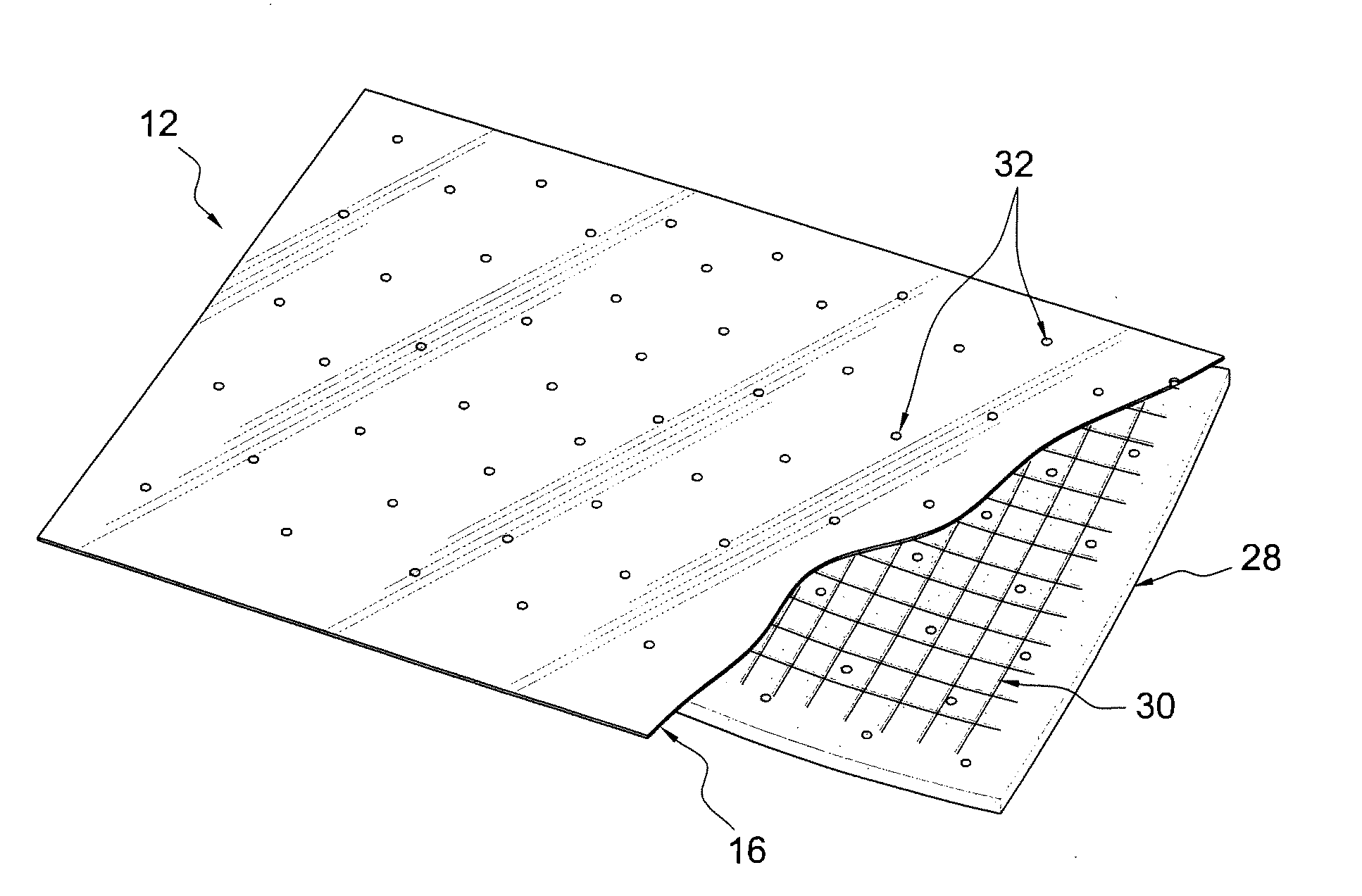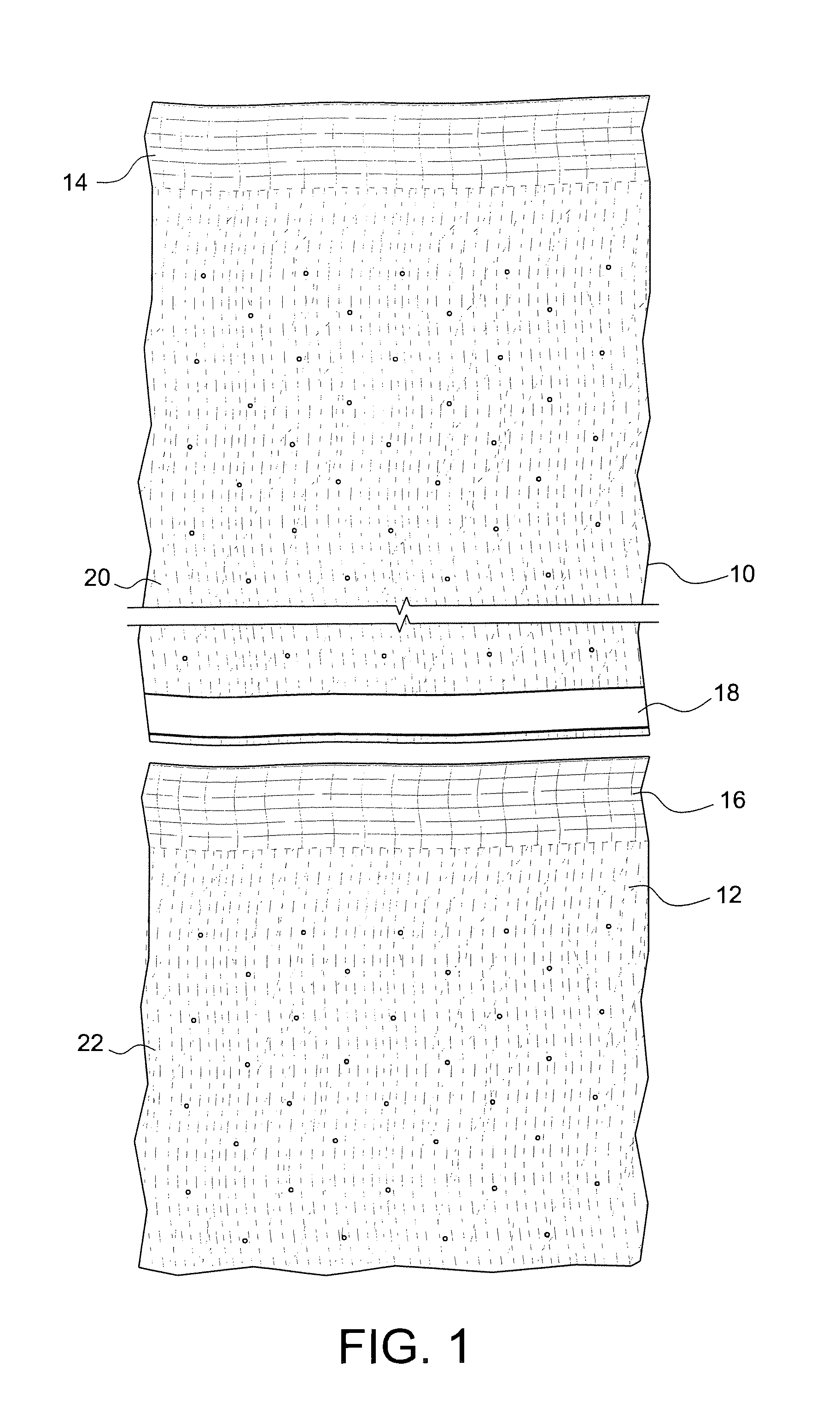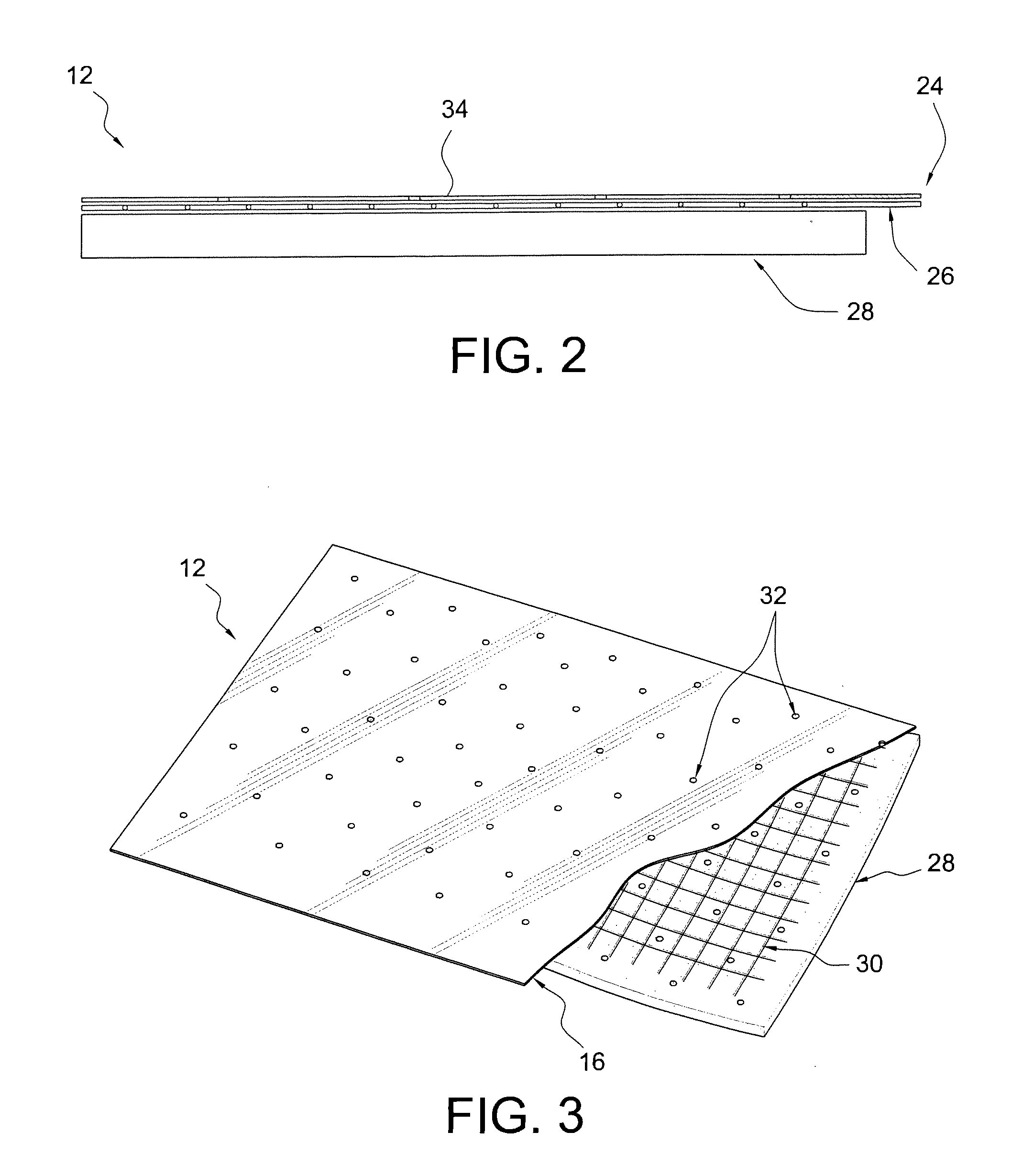Low-E housewrap
a low-e, house-wrapping technology, applied in the field of building structure materials, can solve the problems of increasing construction costs, providing little other contribution to the energy efficiency of the structure, and moisture concerns can be one of the worst enemies of home or building construction, and achieve the effect of increasing the wall profil
- Summary
- Abstract
- Description
- Claims
- Application Information
AI Technical Summary
Benefits of technology
Problems solved by technology
Method used
Image
Examples
Embodiment Construction
[0026]A low-E housewrap is described. In the following description, for purposes of explanation, numerous specific details are set forth in order to provide a thorough understanding of the exemplary embodiments. It is apparent to one skilled in the art, however, that the present invention can be practiced without these specific details or with an equivalent arrangement.
[0027]Referring now to the drawings, wherein like reference numerals designate identical or corresponding parts throughout the several views, FIG. 1 illustrates a top view of low-E housewrap materials according to one disclosed embodiment of the present invention. By way of example, two pieces of the low-E housewrap materials 10, 12 are shown. Each of the two pieces of low-E housewrap materials 10, 12 may comprise flap portions 14, 16, respectively, at one end thereof. At another end the low-E housewrap material may include an adhesive strip 18 such as that provided on low-E housewrap material 10. In a preferred embod...
PUM
| Property | Measurement | Unit |
|---|---|---|
| area | aaaaa | aaaaa |
| flexible | aaaaa | aaaaa |
| flexible insulation | aaaaa | aaaaa |
Abstract
Description
Claims
Application Information
 Login to View More
Login to View More - R&D
- Intellectual Property
- Life Sciences
- Materials
- Tech Scout
- Unparalleled Data Quality
- Higher Quality Content
- 60% Fewer Hallucinations
Browse by: Latest US Patents, China's latest patents, Technical Efficacy Thesaurus, Application Domain, Technology Topic, Popular Technical Reports.
© 2025 PatSnap. All rights reserved.Legal|Privacy policy|Modern Slavery Act Transparency Statement|Sitemap|About US| Contact US: help@patsnap.com



